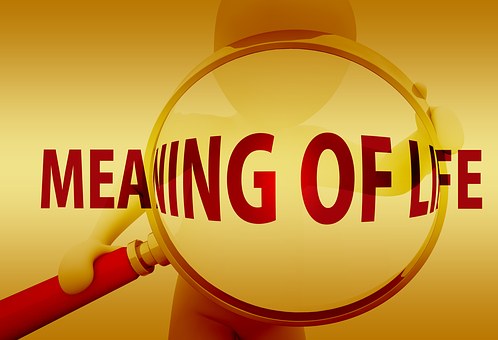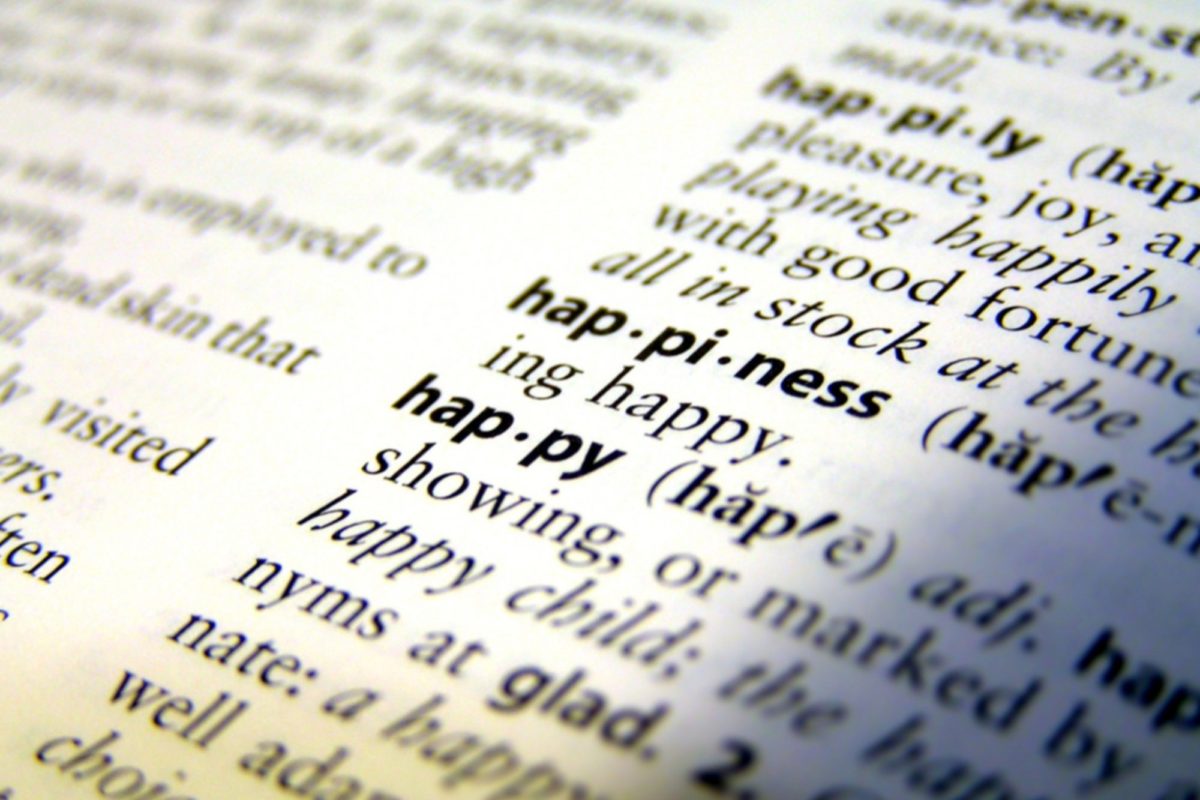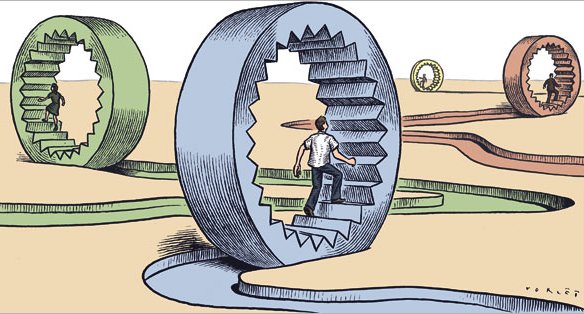
About ‘A’
An achievement is subjective and can only really be measured by the individual.
So, the effort of getting out of bed each day may be an achievement for some; for others, it may be standing up and courageously saying something out loud in a team meeting, no matter how small the comment; for many of us, maintaining harmony within a difficult relationship, skillfully managing one’s emotions in turbulent circumstances or even writing an article are things we just do or experience on a daily basis – yet do we take stock and celebrate them as real achievements? It’s easy to let these things pass us by and continually fix our gaze to the ‘ultimate’ winning of the pitch, prize or promotion.
The trick is not to compare ourselves with other people; moreover, it is essential not to downplay our efforts or successes we make on a daily basis, but to recognise these moments (no matter how small). Acknowledging these moments will make a huge difference to our sense of self, our inner-confidence and our ability to then serve others as a powerful human being.
So then, how can we recognise our daily achievements?
I will outline two practical things we can do to support this: by turning our appreciation volume up and by setting our own bar (or as regularly practiced in coaching, to realise our own goals).
To set goals that are meaningful and realistic, for both the short and longer term, we must at first have an understanding of our own values that tie in with our higher purpose (as covered in the ‘Meaning’ part of Seligman’s PERMA model). This may take a little time and thought – what is important in our working and personal lives? What things do we really value?
Setting goals fulfil our inner ambitions, give fuel to motivate and provide a sense of clarity to where we want our lives to go in the future. Once the goal is set, we are on the journey: subsequently, every small step towards this goal is the achievements that will eventually propel us to our desired, greater heights.
Remaining positive towards these goals can be a challenge in light of set backs, working with others and confronting the restraints of time, modern technology and busy schedules. At this point, it is helpful to understand Seligman’s other key principles within the PERMA model and know how to cultivate positive emotions, discover what keeps us engaged, find support from having close and authentic relationships and finally to have meaning and purpose to what we do.
Alongside the setting of goals, it is also important to recognise each achievement through mindful appreciation, or as Bryant and Veoff call the “conscious attention to the experience of pleasure.”
This “conscious attention” is taking time to stop and observe, taking notes (perhaps in a gratitude journal) sharing our wins and congratulating ourselves. The more we can do this, the more the state of celebrating our own achievements will become a habit, and we can to smash through the taboo of hiding our achievements for fear of being seen as proud or on top of our game.
So to sum up, an achievement is not just the moment of glory crossing the finish line: it’s taking part in the race. The daily experience of living, loving and sharing what we have to give with the world is something we should continually celebrate – and just imagine a world if we all did.
Bailey & French are a team passionate about creating the simple, positive platforms and practical tools that support people to clarify what they truly want to achieve and then do it. We know everyone is busy at work so make sure our interventions are easy to apply, high impact and often self-facilitating. If you are interested in finding out more about how we work with individuals, teams and whole organisations to be more engaged, successful and positive, we’d love to hear from you.
This article on ‘Achievement’ is one of a sequence based on Martin Seligman’s PERMA model of wellbeing. You can view our previous article on Positive Emotions, Engagement, Positive Relationships, Meaning here.
Adam Webb


About How
An unnamed telemarketing company had 400% turnover. That’s bad.
The underlying purpose of the company, however, was good. The telemarketers were asking alumni for donations to fund scholarships for students who would otherwise not have the opportunity to attend university, something that they knew mattered and was important. The problem, they realised, was that their telemarketers were so disconnected from this outcome that they saw their job as “harassing people for money”. Not so inspiring.
They tried something novel. They invited a beneficiary student to come in during one of the lunch breaks and talk to a team of telemarketers. She told them about her experience at University so far, and how she wouldn’t have had the opportunity without them.
Over the next month that team increased their received donations by 17% and spent 142% more time on the phones!
Something seemed to be working. More beneficiary students were invited in over lunch, and month on month each team had an opportunity to meet them. The telemarketers now said that they felt they were “helping people to have the opportunity to go to university” and “changing lives for students”. Weekly revenue went up 400%, turnover went dramatically down. How are these results possible without paying £1 more as motivation?1
Economist and author Dan Pink is famous for his theory and ted talk on intrinsic motivation stating that autonomy, mastery and purpose are the fundamental drivers to human behaviour, and have a stronger effect on our actions and results than extrinsic motivation (i.e. monetary reward). He argues that intrinsic motivation, with purpose as a key component, are what drive people to get up in the morning, create, persevere, volunteer. We can get more out of people and increase happiness and wellbeing by supporting these intrinsic motivations.
If we know the priceless value of helping people and employees feel purpose and tap into their intrinsic motivations, why are UK engagement rates still so low? Why are we struggling to empower people to find meaning in their work? Do we lack the knowledge or tools to do it?
I would argue that we know the answer, we’re just not prioritising it. At a cost of 6bn2 to the UK economy, it’s time to step up.
At Bailey & French we are passionate about creating practical tools and programmes that empower people and organisations to explore meaning and increase engagement and productivity at work. Our interventions are easy to apply, high impact and accessible for all people.
Our solutions include consultancy, programme design, facilitation of workshops in person or online through to train the trainer options and self-facilitating tools.
We will be speaking at the CIPD Wellbeing Conference on June 19th, and in the lead up we are publishing a series of articles addressing different aspects of wellbeing. If you are interested in finding out more about how we work with individuals, teams and whole organisations to be more engaged, successful and positive, we’d love to hear from you.
Jackie Todd
1 Harvard Business Review, Managing Collaborative Overload, Adam Grant & Rob Rebele: https://hbr.org/webinar/2017/01/managing-collaborative-overload
2 HR Magazine, Disengaged employees and poor health cost UK economy 6billion


About Why
As human beings, we are social mammals and rely on our connections with others for both practical and emotional support.
We have an inherent need to relate and belong, officially recognised way back in the 1940s by Abraham Maslow in his ground-breaking ‘Hierarchy of Needs’, and more recently, by Martin Seligman’s ‘PERMA’ model, where he highlighted how important ‘positive Relationships’ (the ‘R’ of ‘PERMA’) are for our lives and cited Chris Peterson in placing them at the heart of human flourishing.
But, while this dependence on our relationships with others is well accepted in our home lives, in our working lives, we often seek to distance ourselves from it, to demonstrate that we are independent, capable professionals, who don’t need help from others. To be proper ‘grown-ups’ – we seem to believe – we have to detach ourselves from others.
In fact, having good social relationships in the workplace has been shown to have a positive impact on both our own and our organisation’s success.
Having people at work that we think of as friends as well as colleagues can lead to better health and wellbeing, more positive emotions, greater vitality and energy, increased engagement with tasks, better access to support and information and an enhanced ability to learn.
And, for our organisations, positive work relationships offer increased collaboration and cooperation, higher retention, a greater sense of shared purpose and improved organisational learning and adaptability (the ever-present ‘continuous improvement’!)
So perhaps we should be spending a bit more time on those ‘water-cooler’ chats?
Bailey & French are a team passionate about creating the simple, positive platforms and practical tools that support people to get a better understanding of their strengths and know how to craft work and life around them. We know everyone is busy at work so make sure our interventions are easy to apply, high impact and often self-facilitating. If you are interested in finding out more about how we work with individuals, teams and whole organisations to be more engaged, successful and positive, we’d love to hear from you.
This article on ‘Positive Relationships’ is one of a sequence based on Martin Seligman’s PERMA model of wellbeing. You may also want to read our articles on Positive Emotions and Engagement.
Amy Parker


About How
Don’t ask what the world needs. Ask what makes you come alive, and go do it. Because what the world needs is people who have come alive. Howard Thurman
We are each unique. Our fingerprints, our personalities, our talents and our dreams. It’s not surprising, then, that there is no one-size-fits-all roadmap for a happy and successful life. Each person’s path to fulfilment is also unique.
Even if the specifics of a flourishing life will vary for each person, there is a very simple piece of advice that crops up again and again in philosophy, psychology and popular wisdom. ‘Follow your Bliss’ is how Joseph Campbell worded it and you can see the same message phrased differently in the Howard Thurman quotation above. Through a positive psychology lens, we might say, ‘Get to know your strengths – then craft a life that gives you the opportunity to play to them as much as possible’.
Our strengths are those things we do that energise us, that we enjoy doing and have a natural capacity for. For example, we may have a strength around empathising with others, around solving problems creatively or being able to focus on a task until it’s completed. If it’s a strength, it won’t drain us and we’d happily spend a good chunk of our time using it. People who know their strengths and play to them regularly have been shown to be more engaged in work and life than people who don’t.
I want to share an exercise that I’ve found simple and profound in terms of deepening understanding of personal strengths and knowing specifically how to lead a more engaged life.
It’s very simple. At the end of each day write down your favourite moment(s) of that day in a journal, preferably adding a little information about why that was a favourite moment. Our favourite moments tend to be those times we are in our element and hence playing to our strengths more than usual. By recording favourite moments for a couple of months or more and then reviewing what you’ve written, you’ll notice patterns emerge and this offers insights into your strengths.
When I did this, I had a lot of data to draw upon, as I’ve recorded my favourite moments in a gratitude journal since 2011. I found the review process illuminating and fascinating and it’s helped me get a much more specific understanding of my strengths.
For example, I used to say that one of my core strengths was the ‘love of learning’, of developing new skills and acquiring new knowledge. However, when reviewing my journal, there were not so many moments directly linked to this. Far more of my top moments were simply about novel experiences – meeting new people, seeing new places, trying new foods, exploring new ideas or finding a new, fresh perspective on a familiar situation. I use the word ‘explorer’ to describe this which feels far more authentic and resonant to me as a core strength than ‘love of learning’.
After the exercise, I started experimenting with including more exploration in my day-to-day life – for example, going to different places or eating different foods for lunch. Or dipping into random books from our psychology bookshelf, exploring a concept and finding novel ways to apply it to whatever I’m currently working on. It worked! I felt more engaged, had more experiences of flow (deep, enjoyable absorption in activities) and a deeper sense of satisfaction that I was genuinely crafting a life that aligned with the best in me.
If you’d like to try it yourself, here are suggested steps to follow:
1. Write down your favourite moment(s) of each day in a diary.
2. After a month or more, group them into themes, noticing patterns that emerge.
3. Use this information to choose five or so words for your core strengths.
4. Make little or large changes to your work and life so you are playing to your strengths more often.
5. Enjoy more flow, engagement and success.
Bailey & French are a team passionate about creating the simple, positive platforms and practical tools that support people to get a better understanding of their strengths and know how to craft work and life around them. We know everyone is busy at work so make sure our interventions are easy to apply, high impact and often self-facilitating. If you are interested in finding out more about how we work with individuals, teams and whole organisations to be more engaged, successful and positive, we’d love to hear from you.
This article on Engagement is one of a sequence based on Martin Seligman’s PERMA model of wellbeing. Click here for our article on Positive Emotions.
Joshua French


About Bailey
In this time of intense focus on data and technology, at Bailey & French we have separated the two and redefined how to think about data collection. For example, engagement surveys tell us averages (data) but often miss the detail, the commentary which enables effective decisions and strategies. Qualitative data is so critical yet so often skimmed over because of the complexity of analysing it.
We are really excited here at Bailey & French, as we have officially launched a new suite of wellbeing products which enable ‘diagnosis’ conversations at a team level to open dialogue around the core pillars of wellbeing whilst collecting influential data in a swift, scalable and self-facilitating way.
Feedback so far has been fantastic, as we are the sole organisation looking so comprehensively at wellbeing, taking it beyond the remit of mental health, gym memberships and nutrition programmes – read about how our approach differs from the norm here. Most importantly, this approach is preventative, leading to less grievances and relevant issues, enabling HR teams to get on with their strategic work.
The online shop for our simple and practical tools is now open on our refreshed website – check it out at http://www.baileyandfrench.com.
We are really excited to be speaking about this at the upcoming CIPD London Wellbeing Conference on June 19th. This conference will be all about practical guidance on how to simply and swiftly embed a holistic health and wellbeing approach that fits your organisation’s strategy. Click here for more info about the event, agenda and speakers, and we look forward to seeing you there!
Leading up to this event, we will be publishing weekly articles on what research shows to be the pillars of positivity and wellbeing at work, in line with Dr. Martin Seligman’s work. Check out our LinkedIn page or website to keep up to date on the latest thinking.
Best wishes,
Jackie


About P
When I think of the proudest moments I have had in my work, they have usually happened after my most anxious, which I think is not unconnected.
One of the proudest moments in my career was when I first developed and delivered a senior leadership programme. Although I was an established trainer and facilitator, I had only once ever trained a group of leaders before – and that was in equality law, a specific, bounded topic that we covered in hour-long sessions. But when my boss went off on maternity leave, I was asked to lead the development and delivery of the company’s new, flagship leadership programme, building the next generation of senior leaders who would take the company forward.
I was excited about doing this, but as the first part day of the leadership programme drew closer, worries kicked in. Was I good enough? Could I speak with authority with such a senior group of leaders? Would they listen to me? Would the content work? The weekend before the first day, I fantasised about the work building burning down over the weekend, so that I wouldn’t have to deliver it. And some of my concerns weren’t completely unfounded. One senior leader met up with me before the session to challenge me – ‘What could I learn from you?’. Another did the same thing, only more obliquely, through their Head of Department – ‘Is this programme really appropriate for Julie? She is already very advanced, and I’m not sure she needs it’.
The building didn’t burn down, and everyone did come along as planned. And I carried on feeling anxious before every session. But, as the programme progressed, my confidence grew. I still worried, but worried less. I built up strong relationships with the group, and saw them do the same with each other. I was also really lucky in working with someone who’s positivity and energy kept me going and balanced out the over-analysis that could make me worry, and in having a boss who consistently demonstrated absolute faith and confidence in my ability to get the job done, and to do it brilliantly.
The feedback at the end of the programme was fantastic, with more critical feedback about the session run by an external facilitator. I watched the group bond and grow, both as individuals and as a leadership team. The senior IT leader who had challenged me at the start of the programme turned out to be the person to make the most progress. Through the programme, his awareness of himself, how he led and how he came across to people, shifted so that he really addressed how he worked with people and made some fundamental approaches to his role as a leader.
At the end of the programme I did feel proud. I felt I had accomplished something, that I had pushed myself to do something that scared me, and had come out the other end triumphant. I felt proud, elated, and so satisfied with what I’d achieved. The experience taught me what I was capable of if I pushed myself, and that sometimes other people could spot abilities in me that I couldn’t see myself. It also showed me how much satisfaction and joy I could feel in my work, if I pushed myself and built on what I was already good at. And that it was fine to feel nervous – the nerves I had before each day of the programme never went away – but if I acknowledged those nerves and forged ahead anyway, I could make it a success. Later I learned about the concept of ‘eudaimonic happiness’, or human flourishing, which is about being able to integrate positive and negative emotions and really grow as a human being. And it made me think about this experience, about the doubt and anxiety before the sessions, and the satisfaction and pride I felt after, and how one was necessary for the other.
I’ve picked out pride here as a positive emotion I have felt at work, but I could just have well picked any number of other emotions. I could have picked gratitude, and talked about how grateful I am for the faith one boss had in me that opened up opportunities and helped my career leap forward; I could have picked inspiration and talked about my colleague who inspired me to be a better, kinder person; or I could have focused on the joy I felt working with someone who made me laugh every single day. The point for me is that it’s fairly easy for me to think of examples of positive emotions I’ve felt at work, and in fact it’s those times that stand out as key moments in my working life. They have helped my wellbeing and made me grow, but they have also provided the backbone to my career and given me great satisfaction in my life.
Ben Steeden


About Stop
It’s probably not a surprise to any of us that stress and mental ill-health are two of the leading causes of long-term workplace absence in the UK. We’re working longer hours – even compared to just four years ago – and we’re struggling to switch off when we get home. The impact of this is lower personal productivity and job satisfaction levels, as well as a range of health issues, with insomnia, muscular aches, headaches and constant irritability topping the list (and, incidentally, feeding into the most common causes of short-term absence).
I’ve spoken to several clients this year who have ‘wellbeing’ on their agenda, and I wonder: what does this mean for most organisations?
From what I hear, interventions tend to focus on one of two key areas. There is a health focus, providing our people with fresh fruit at work, stand-up desks and gym memberships. And there is a focus on providing the best support that we can for people with mental health issues, including being more open about illnesses such as depression and anxiety disorders. Both approaches are positive ways in which organisations can support their people, and increasingly important as we spend more of our waking hours at work.
However, are we missing a trick? Is there a way of supporting the wellbeing of all of our people, beyond physical or mental health? For me, the answer is a definite yes. I passionately believe that the answer lies in Positive Psychology, and in empowering people to be their best selves at work.
We can look at the PERMA model, which addresses Positive Emotion, Engagement, Relationships, Meaning and Accomplishment to help us surface and discuss the fundamental drivers to human wellbeing and flourishing. By moving the conversation to focus on what is right with people and away from what is wrong with us, we enable every person to thrive and better respond to new and different challenges. It helps us develop optimism, achieve our goals, increase the amount of ‘flow’ we experience, and build stronger relationships and collaboration.
Over the coming weeks, we will be publishing articles specifically related to each element of PERMA, challenging our thinking on what it means for us and our organisation. When we think about wellbeing in a way that helps our people respond more effectively to modern work demands, the impact on wellbeing at work and organisational performance is significant.
When we think about wellbeing, it is tempting to take a parental approach and try to ‘look after’ our teams, but the real power lies in empowering our people to take responsibility for themselves. We frequently hear clients say ‘I wish my team would step up and take accountability’. We need to provide the platforms that empower people to do just that, and not assume that people need protecting or hand-holding. We can all take a more adult approach.
Life is a journey and can be incredibly challenging at times. Although providing apples is nice, giving our teams the simple and human tools for managing and developing themselves is much more valuable.
Alex Bailey
Click to read an article on each element of PERMA: Positive Emotions, Engagement, Relationships, Meaning and Accomplishment.


About Happiness
It was a delight to hear Drs. Itai Ivtzan and Tim Lomas speak at Conway Hall last week on ‘Positive Psychology – New Ideas for Happier Living’, an Action for Happiness event. Among the many topics touched upon, one that particularly resonated was their exploration of the word ‘Happiness’.
As Positive Psychology practitioners, we have both an affection for, and a wariness of, the word happiness. We love that it’s universally accessible, a simple short-hand for what all human beings are looking for and want for their friends and family. However, ‘happiness’ also creates associations of a bright, shiny positivity that excludes any dark side. This unrealistic view of happiness is not what Positive Psychology is about.
It’s helpful to use two Greek terms, hedonic happiness and eudaemonic happiness, to clarify what we mean. Hedonic happiness is, as Itai explained, defined by its exclusion of anything perceived as negative – it is cheerfulness, pleasure and avoidance of pain. By contrast, eudaemonic happiness is defined by an integration of perceived negative and positive emotions. It is learning how to be our best selves and relate to others in an emotionally intelligent way, regardless of circumstances. It is the state of flourishing, wellbeing and self-actualisation.
It is eudaemonia, this more realistic and meaningful version of happiness that Positive Psychology aims to help people achieve. It is also the raison d’etre of Bailey & French; all our interventions focus on supporting people to experience more eudaemonic happiness at work.
Itai also shared a fascinating piece of research which again confirms the influence of our beliefs and mindsets on our quality of life. To give a simplified summary, two groups of people were compared: Group A was composed of people who believed that happiness could not include pain or negative emotional experiences. Group B was composed of people who believed that it could. Group B, who believed in eudaemonic version of happiness, were found to be less anxious and have higher wellbeing during stressful situations. Their belief and definition of that one word ‘happiness’ made a difference to their ability to flourish in life.
Much of our work at Bailey & French focuses on helping individuals, teams and whole organisations be aware of the impact of their beliefs, and develop beliefs and mindsets that lead not only to great performance, but also to deep, authentic happiness.
It’s not about trying to be upbeat all the time. It’s about embracing each step of the challenging and rewarding journey that is human life.
Get in touch to explore how we have successfully helped organisations of all sizes and in all industries, in the UK and internationally, improve the way they motivate performance. We work with organisations to find the best next step for them in cultural evolution. info@baileyandfrench.com 01273 830830


About Bringing
Myself and my colleague, Nader Beshara, had the pleasure of visiting a university in Brighton last week to share with some of the students the Positive Psychology and Strength Coaching that we use here at Bailey & French. We conducted the visit in the university’s Career’s Centre, where a group of enthusiastic students signed up to learn about what we do at Bailey & French, and how they can discover and use their strengths to help them with their future career choices. Nader and I firstly presented to the group of students to share with them what Positive Psychology and Strengths really mean, and how being self-aware of our own strengths leads us to feel happier and more motivated at work. We then moved on to giving one-to-one Strength based interviews with 6 of the students, to help them become self-aware and to (hopefully!) help them in choosing a career path that’s right for them.
The presentation included an overview of what we do as an organisation and how we incorporate Positive Psychology and Strengths Coaching at Bailey & French across the organisation, no matter what individual roles we have. As Strength-Based Consultants, we conduct a strengths coaching interview with all of our candidates before we pass them onto a client, as we understand the importance of ensuring a candidate is both energised and will thrive in the company we am putting them forward for, and not just in matching their skills to another job description.
After the presentation, we proceeded to conduct our one-to-one Strength based interviews with 6 of the students, where we asked them several questions to find out what they are good at, what excites them, and what they are truly passionate about. We then asked them to identify what they consider to be their own Strengths from a selection of Strength words on cards, before sharing with them the Strengths that we identified in them, and the reasons why. Nader and I identified the same Strengths that the student chose for themselves, meaning that we had fulfilled our purpose and created in them a sense of awareness in what their own Strengths were, without us telling them what we thought they were. This was incredibly gratifying and it was brilliant to hear the students looking so in awe at this new method of learning about themselves, and the new approach they could now use in considering their career options.
One thing we took away from it was how valuable we would have found that type of advice when we were their age, ready to embark on the first steps in our career. Having awareness of ourselves and what really energises us means you we likely to choose a career path that aligns with our strengths and that we enjoy. We hope the students enjoyed the day as much as Nader and I did, and certainly wish to return soon to deliver another session for more of the students.


About 3
Do you ever find yourself coming out of a training course buzzing with all the new things you are going to do and implement, only to find yourself 3 months later doing the exact same things you did before?
I do. Want to know why?
It’s because changing our routines, our habits, is hard. Our brains are wired to constantly save energy and have evolved over time to create mini routines, or habits, that require very little energy and enable us to get through our day with our mental faculties intact. These energy saving routines are everywhere in our day-to-day lives, from how we get ready to leave our house in the morning to how we start the car and drive to work. We don’t need to exhaust mental power debating how to do these things every morning, we just do them. Foot on clutch, power on, into gear, pedal down and off you go.
These routines also dictate much of how we behave at work – how we interact with people, how we prioritise our workload, how we give feedback and coach our teams etc.
The challenge is that on any training or leadership programmes we are taught new ways to coach and lead our people, influence or sell, and these new routines unfortunately require energy to be embedded as habits. Although we all know that we won’t develop as great leaders without being agile and implementing new ideas and learning, it can be really difficult to change our behaviours and maintain this change, rather than simply putting the course notes in the drawer never to be seen again. With this in mind, next time you are in this situation try to…
Act immediately. Start to implement your 1-3 key takeaways the first day back at work. The longer you wait, the less likely you will embed the new habit. Focus on the learnings which resonate with you! It doesn’t need to be everything the course taught you or what your colleague is doing.
Tell someone about it. Get a buddy, or even better a bigger group (maybe your whole team or department), and tell them what you are trying to do differently. Maybe even all do it together. You don’t need to all be changing the same habit, but you do need to be supportive and hold each other to account!
Figure out your cues. Research has shown that our habits are triggered and rewarded in a loop of sorts. Cue – Routine – Reward. The cue is the trigger that stimulates you to do a habitual behaviour, the routine is the habit and the reward is the positive feeling or outcome that makes you want to do it again. Research has also found that it’s easier to replace an old habit than create an entirely new one. So, figure out the cue, then use this same cue to trigger the new desired habit.
I’ll share a personal example with you… in the change to my new role I have had to re-evaluate my approach to coaching. I’ve always used psychometrics and behavioural interviews as a starting point, and therefore approached conversations from an “I am the expert sharing what I have observed about you” stance – fundamentally assessment with coaching added on the end. In my new role I am expected to flip this on its head and simply coach – start with questions, and follow with questions, thereby getting the individual to come up with the insight and actions themselves.
I’m still in the process of changing this deeply embedded habit, and it is hard! I have figured out my cue – it is when someone says something which triggers me to believe I have the solution. I know what I want my new routine to be (as explained above), and have made a plan to help me do this. Every time I get that feeling of ‘knowing the answer’, I write it down on my notepad and ask a further probing question, and if the urge to ‘tell’ is still there I dig my fingernail into my thumb. Most importantly I’ve found that I get the same reward as before (the feeling of helping someone), but it is even stronger because I feel more impact.
Figuring out the cue is the hardest part. If you are reading this and thinking of what your bad habit cues may be, it helps to think of these categories (research has shown almost all cues fit into them):
· Location
· Time
· Emotional state
· Other people
· Immediately preceding action (this was mine!!)
Over to you, good luck!
P.S. If you want further reading, try The Power of Habit by Charles Duhigg.
